Whisper it quietly, but spring is just around the corner. I know, I know, it doesn’t quite feel like it yet, but the fact remains the sun is nearly back with us. With that in mind, now is the time for planning.
Another spring provides you the platform to start afresh with your outdoor space. Take the lessons you learned from 2017, all the plans you laid over that bitter winter, and start the process of making them a reality. Of course, the plants in your flower beds aren’t the only ones seeking your attention. Greenhouses are as popular as they’ve ever been, posing their own unique challenges and considerations. For some, a flourishing greenhouse can be as rewarding as a blooming garden, and there are certainly plenty of worldly examples of how to do a greenhouse right.
With that in mind, let’s take a look at some of the world’s greatest greenhouses – we may never be able to reach their dizzying heights, but we can certainly draw some inspiration as we prepare for spring 2018.
Royal Greenhouses of Laeken
Situated in the park of the Royal Castle of Laeken in Brussels, Belgium, the Royal Greenhouses have stood on the grounds since the 18th century. The Greenhouse took 21 years to build and was officially opened in 1895 after the domed greenhouse, known as the Iron Church, was completed. This section of the building was originally meant to be used as the royal chapel, situated in the middle of a vast and flourishing Eden, but was converted into a bathing house after the death of King Leopold II.
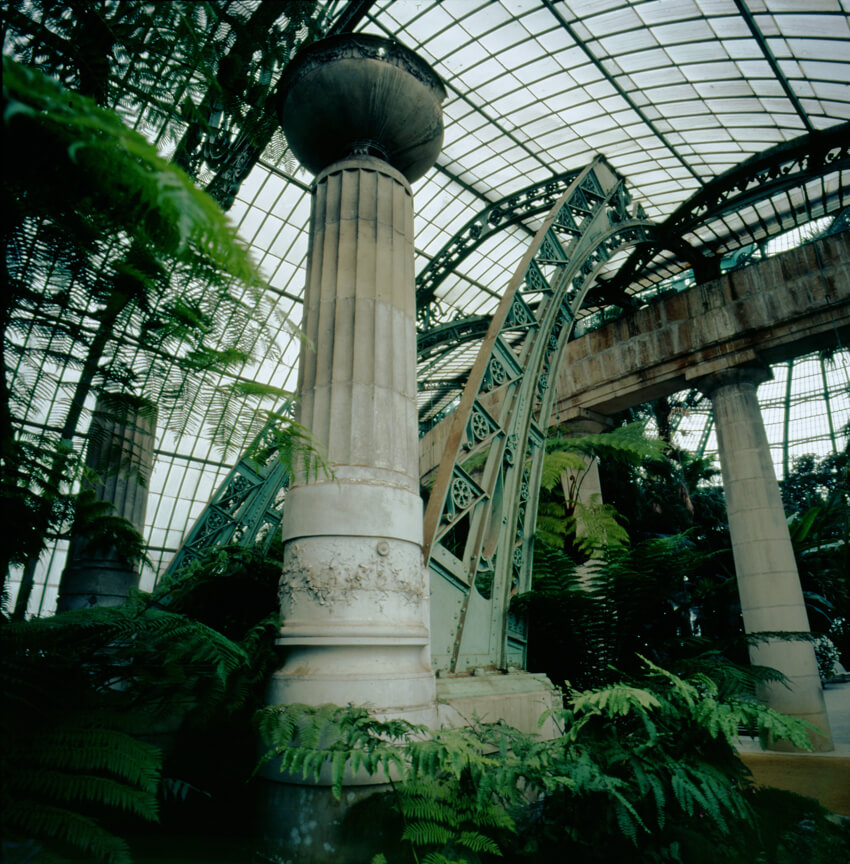
Unfortunately, visiting the Greenhouse is not as simple as you might like. Its doors are only open to the public during a two-week period in April and May when the majority of the flora is in full bloom. Given King Leopold’s less-than-chivalrous influence over the Congo, the Greenhouse features a range of flowers from the African continent. The building also houses – at last estimate – 305 species of camellias and 45 orange trees. When the building was first erected, it was estimated that King Leopold owned 130 such trees, some as old as 400 years.
Berlin-Dahlem Botanical Garden and Botanical Museum
“The world in a garden.” That was the ambitious aim of Adolf Engler, who became the first director of the Botanical Garden in 1889. The first record of the garden comes from 1679 at the directive of the Great Elector of Prussia. It was moved to Berlin-Dahlem in the early 1900s and assigned to the German botanist Engler to cultivate the project and craft a botanical garden Germany could be proud of.
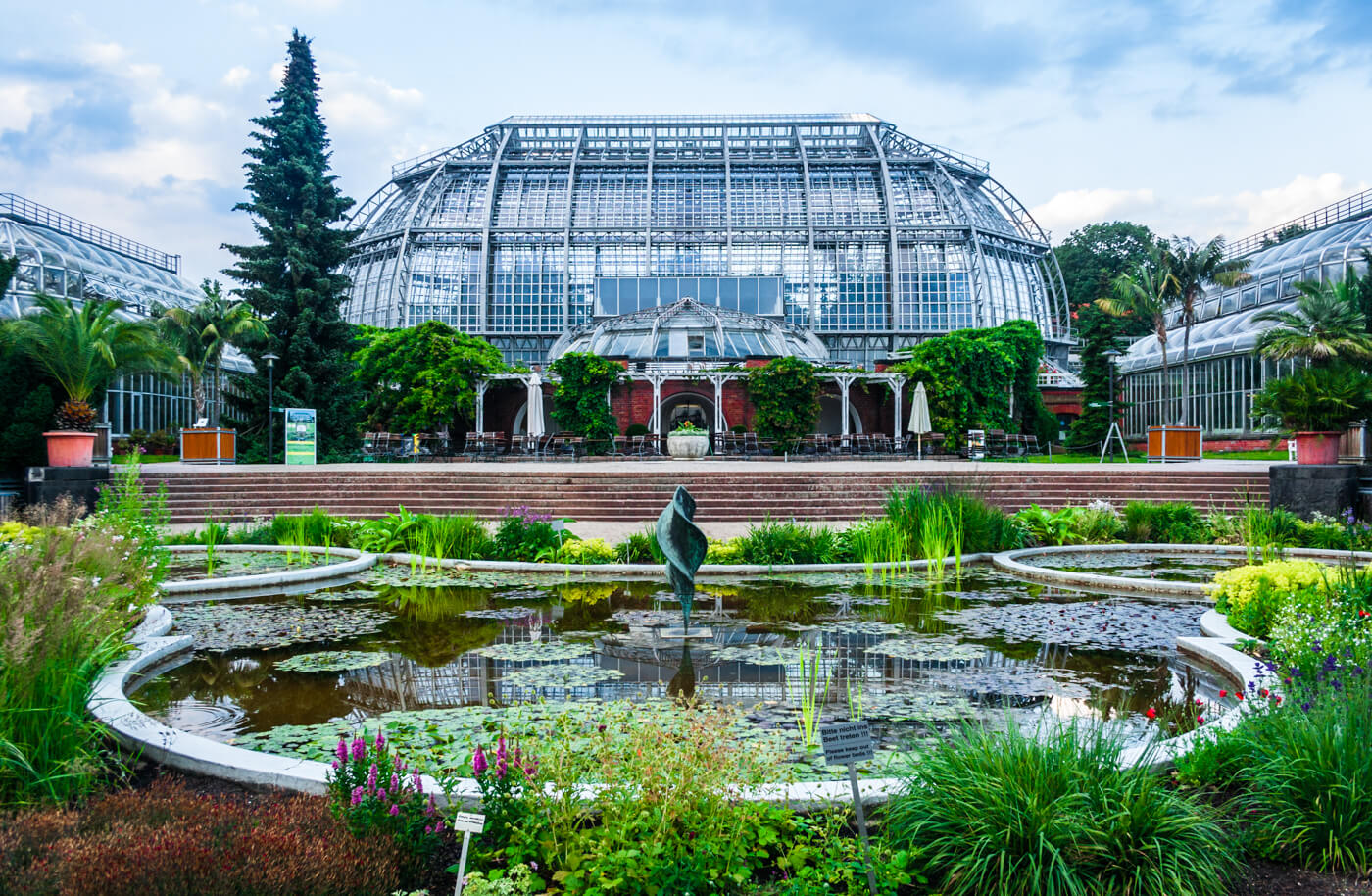
Today the gardens contain a collection of nearly 20,000 plants, featuring trees and flowers from across the globe. Between the Italienischer Garten (Italian garden), the Wassergarten (water garden) and the Karpfenpfuhl (carp pond), there’s a myriad of attractions to tickle the fancy of any gardener. You’ll discover a range of statutes dating back to 1916, primarily situated in the Italian garden, and the grounds also feature a small cemetery to commemorate those that helped establish it. Among those buried on site are Adolf Engler and his wife Marie, Georg Schweinfurth, an ex-curator and African explorer, and the tomb of Friedrich Althoff. The Botanical Garden truly has something for everyone – whether you’re there to enjoy the Arbour of Roses in the Pavilion or to study the history of botany in the museum, you could spend an entire day here and still feel as though you’ve only scratched the surface.
Kaisaniemi Botanic Garden
Within the Botanic Garden in Helsinki, Finland, is a rather special collection of greenhouses. Across the ten interconnected structures are a range of themes and environments, including an African savannah and a South American rainforest. Each glasshouse is uniquely managed to best cultivate the plants within; it all comes together to create a bizarre but brilliant experience of stepping between one part of the world and into the next.
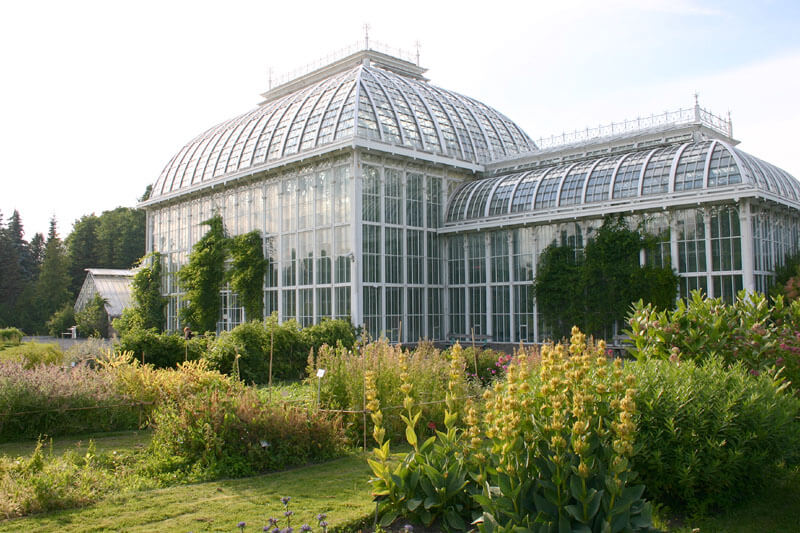
Situated between the greenhouses is a large gallery that usually plays host to temporary exhibitions, predominantly centred on themes of nature as you’d expect. The botanic garden is currently used by the Helsinki University to research and teach plant systematics, but remains open to the public across the year. Although it was originally founded in Turku in 1678, its move to Helsinki in 1829 certainly gave the botanical garden the new lease of life it required.
Jardin Botanique de Lyon
The Jardin Botanique in Lyon, France, is not the only botanical garden in the country, but it’s certainly the most famous. The gardens are open every weekday and are accessible free of charge. The grounds feature an estimated 15,000 plants – among them bloom 200 varieties of water lilies, 100 wild rose species and 1800 types of alpine plants.
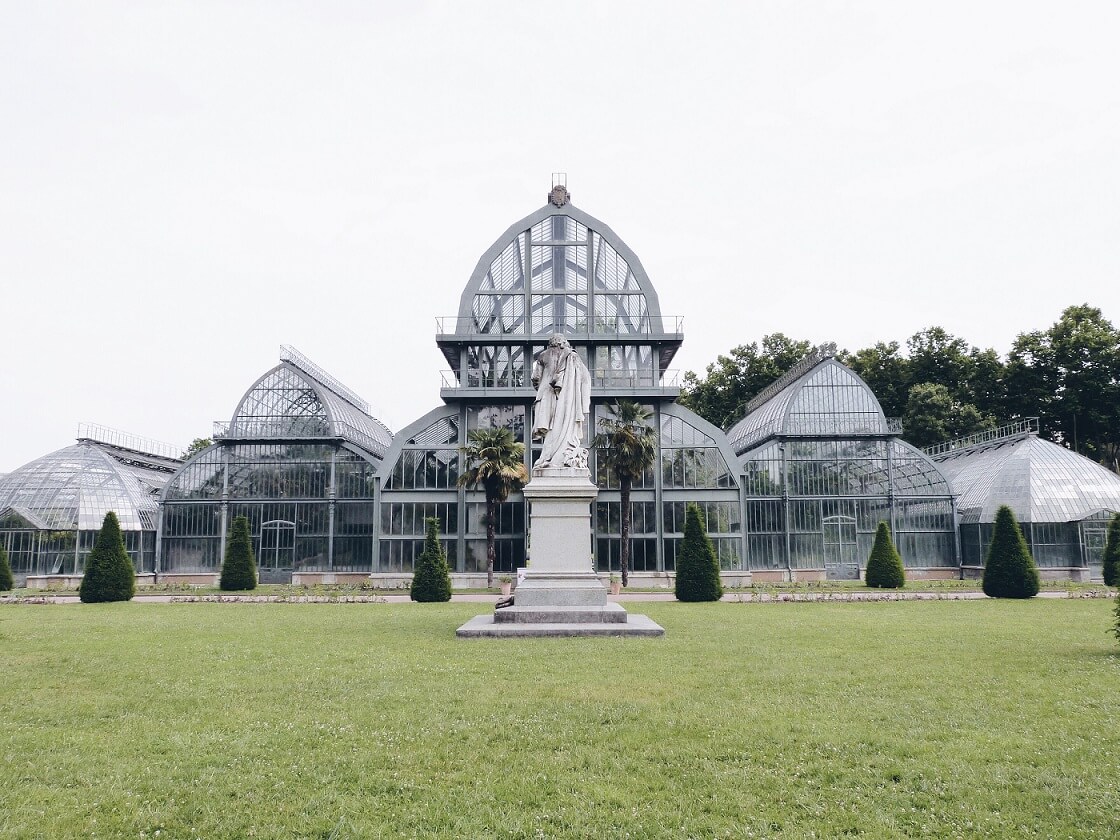
Within the gardens stands a clutch of greenhouses totalling nearly 6,500 square metres. Within their glass walls, you’ll find a central pavilion filled with tropical plants such as camellias (some over a hundred years old), a greenhouse-aquarium and colder greenhouses with plants requiring cooler, drier conditions such as cacti. You’ll also find a Madagascan greenhouse containing 200 plant species from the island nation, along with a statue of Bernard de Jussieu, a famous botanist from the 18th century who worked in the gardens of King Louis XV and arranged the flowers in the royal garden of the Grand Trianon in the Palace of Versailles.
Kew Gardens Palm House
The Palm House in the Kew Gardens, London, is an iconic Victorian glasshouse originally constructed in the 1840s. Designed by Charles Lanyon, the greenhouse is built with an iron frame and plated with over 1600 glass panels for maximum sunlight. Palm houses, by design, require constant heat and were often seen as a symbol of class and prestige in Victorian England.
Nowadays, the Palm House is a living laboratory for a wide range of plants from across the world. Within the Palm House resides a rainforest climate supporting plants from Africa, Australia, Asia and the Pacific. This man-made rainforest, as it were, allows scientists to learn more about the plant-life and how they interact with one another. The Kew Gardens were an incredible feat of engineering for the time, and remain one of the world’s greatest botanical gardens to this day. And if all that’s not enough? The Palm House plays host to the oldest potted plant in the world – an enormous Jurassic cycad with a Latin name you wouldn’t thank me for challenging you to pronounce. It arrived in London back in 1775, making it at least 243 years old.
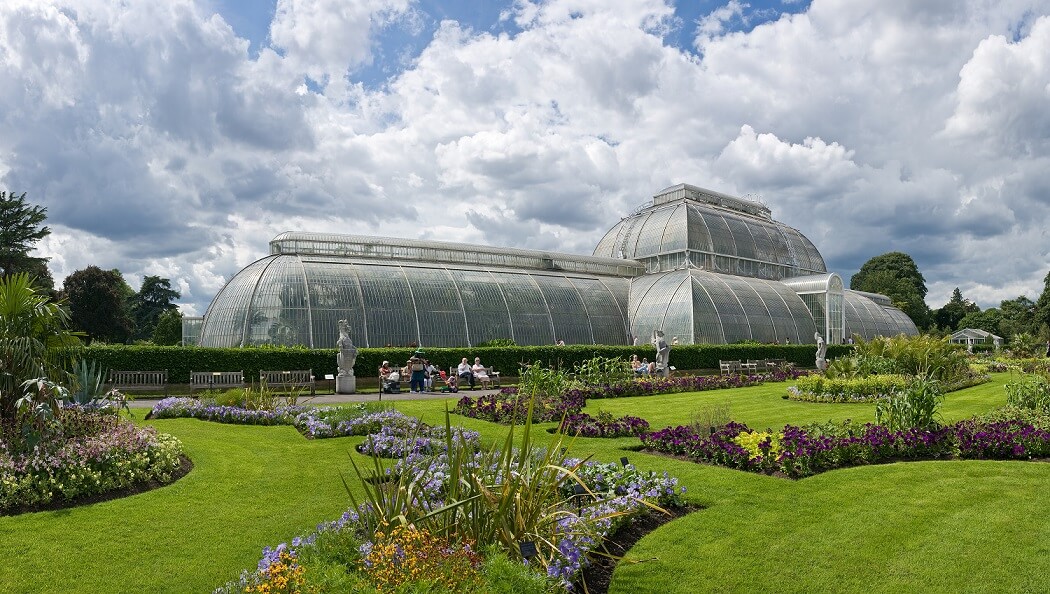
So yes, it’s true; you and I are not destined to develop a greenhouse on the scale of any of the above in the near future. That said, what these greenhouses all show us are not only how the very best do their work, but also the sort of plant-life we can cultivate in the comfort of our own back gardens. You and I need may need to dream a little smaller than the Kew Gardens, but that kind of inspiration can go a long way at grass roots level.
–
Ross works in the Product Loading department and gets to see all the weird and wonderful products that pass through Primrose. Ross is a life-long Southampton fan and favours jazz music, reading and a quiet place to enjoy them.